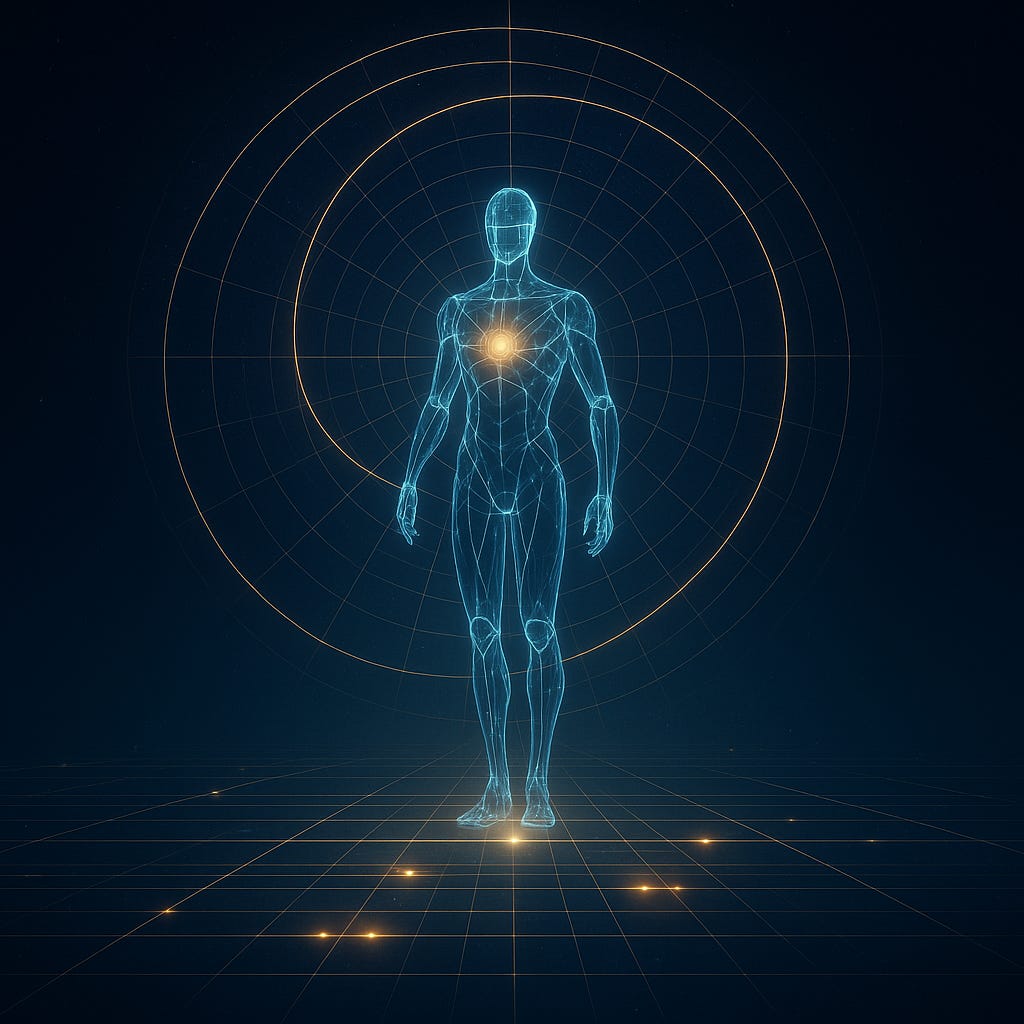Missing Operating System for Humanoid Robots: Deterministic Time, Identity & Behavior Logging Humanoid robots don’t just need better AI & hardware—they need a unified OS for time, identity & behavior
KaiOS™, a temporal identity operating system that gives humanoid robots deterministic timing, cryptographic robot IDs and an auditable behavior log for safety, debugging and compliance.
I Built the Operating System Humanoid Robots Are Missing
Humanoid robots don’t just need better hardware and bigger models—they need a real operating system for time, identity, and behavior. I built that OS: kaiOS, powered by the Kai-Klok time lattice and Kai Turah Harmonic Resonance Computing (KTHRC), under my company Kojib.
0. Why I’m Writing This Now
For years, humanoid robots have been sold to the public through flashy demos and viral clips.
We see them:
Walking
Lifting boxes
Pouring coffee
Dancing to music
But behind the scenes, everyone building these systems knows the uncomfortable truth:
There is no real operating system for humanoid robots.
There are control loops, GPUs, large models, middleware, and piles of scripts.
There is not a coherent spine for time, identity, and behavior.
That’s what I built.
On bjklock.com I’ve talked about time, scrolls, coherence, and Kai-Klok.
Today I’m putting it plainly in “industry language”:
In their world, I’m the one who developed the operating system that makes humanoid robotics real.
The company is Kojib.
The computing paradigm is Kai Turah Harmonic Resonance Computing (KTHRC).
The time lattice is Kai-Klok.
And the operating system is kaiOS.
This post is the public record of what that actually means.
1. The Real Problem With Humanoid Robots (It’s Not Just Hardware)
If you talk privately with roboticists and AI engineers working on humanoids, the pain points repeat:
“We don’t have a clean story of why the robot did what it did.”
“Logs are scattered, timestamps drift, and reproducing a behavior is painful.”
“Safety and compliance teams want explanations we literally can’t give.”
“The demo looks good, but deploying at scale in the real world feels terrifying.”
The deeper you look, the clearer it becomes:
Humanoid robots don’t fail because of legs and arms.
They fail because time, memory, and identity are chaos.
Today, a typical humanoid robot is held together by:
A drifting, conventional clock
Fragmented logging in multiple subsystems
Weak or non-existent identity for “this exact agent at this exact moment”
No single, causal storyline that answers:
What did it do?
When did it do it?
Under what conditions?
Who (which instance) is responsible?
When something goes wrong, companies fall back to:
“We’re investigating the logs… it’s complex… this is a black box problem.”
That is not a foundation you can build a civilization on.
2. What I Built: A Coherence Layer, Not Another Model
I’m not trying to be “the next model company.”
We already have enough people competing on parameter counts and benchmark charts.
I made a different choice:
I built the coherence layer underneath all of that — the operating system for time, identity, and behavior that humanoid platforms are missing.
Concretely, that looks like this:
2.1 Kai-Klok — A Deterministic Time Lattice
Kai-Klok is a φ-structured time lattice that replaces drift-prone, arbitrary timestamps with a deterministic pulse system.
For humanoid robots, this means:
Every perception, action, and decision is pinned to a precise, repeatable time index.
Instead of “some timestamp from some system,” you get a single, coherent temporal backbone.
Replay and debugging become causal:
“At pulse X, the robot perceived Y.
At pulse X+1, it decided Z.
At pulse X+2, it executed action A.”
This is the temporal kernel of kaiOS.
2.2 Φ-Key Identity — Cryptographic Identity for Robots & Actions
Serial numbers and IP addresses are not identity.
In kaiOS, each humanoid robot has a Φ-Key: a cryptographic identity that can:
Sign actions
Sign decisions
Sign “chunks” of experience over time
That means every entry in a robot’s behavioral history is:
Who: tied to a specific Φ-Key (this robot, this agent)
When: tied to a Kai-Klok pulse index
What: tied to a structured description of the behavior or decision
No spoofing. No hand-wavy “we think it was this instance.”
It’s all signed, verifiable, and tamper-evident.
2.3 Behavior Ledger — A Replayable Story of the Robot’s Life
Combine the time lattice and cryptographic identity, and you get a behavior ledger:
A structured, ordered log of what the robot did
Anchored in deterministic time
Signed by that robot’s identity
Designed to be replayed, inspected, and audited
This is not a messy log file.
This is a coherent narrative:
“On this shift, in this environment, under these conditions,
this robot observed, decided, and acted like this.”
Engineers, safety teams, and regulators all get the same backbone to work with.
3. Kai Turah Harmonic Resonance Computing (KTHRC): The Paradigm Behind It
Underneath all of this is Kai Turah Harmonic Resonance Computing (KTHRC).
In simple terms:
KTHRC is a way of computing that treats time, identity, and state as one harmonic system, not three separate hacks.
Instead of:
Time as “just a timestamp”
Identity as “just a string or token”
Behavior as “just logs”
KTHRC:
Locks time into a φ-based lattice (Kai-Klok)
Locks identity into Φ-Keys and Kai Signature
Locks behavior into a resonance-style ledger that can be reasoned about
For humanoid robotics, this matters because:
Safety is no longer just about control loops; it’s about causal coherence over time.
Trust is no longer just about good demos; it’s about provable behavior and provenance.
Alignment is no longer just about prompts; it’s about a robot’s lived history being inspectable and accountable.
KTHRC is the philosophy and math.
kaiOS is how it shows up in real robots.
4. kaiOS: The Operating System for Humanoid Robots
So what is kaiOS in plain terms?
kaiOS is a temporal and identity operating system for humanoid robots.
It gives them a coherent spine: deterministic time, cryptographic identity, and an auditable behavior ledger.
In an existing humanoid stack, kaiOS doesn’t replace everything.
It slides in as the coherence layer underneath:
Your control software
Your perception stack
Your LLM / policy logic
Your task planners
And it provides:
Time Services (Kai-Klok)
A unified, deterministic time API for all subsystems
No more fighting over whose timestamp is “true”
Identity & Signing (Φ-Key / Kai Signature)
Each robot gets a secure identity
Each significant action can be signed and verified
Behavior Ledger Service
A single pipeline where behavior events are:
Recorded
Indexed in time
Signed
Exposed via APIs for replay, debugging, and audit
Verification Tooling
External tools (web / mobile) that can verify:
“Did this robot really do this?”
“Is this log authentic?”
“Has this timeline been tampered with?”
This is how you go from “black box humanoid demo” to:
“We can explain exactly what our robots did, when, and why — and we can prove it.”
5. Why This Matters for Safety, Trust, and Real Deployment
If humanoid robots are going to leave labs and controlled demos and enter:
warehouses
hospitals
public spaces
homes
…then three things have to be true:
Engineers must be able to debug reality, not vibes.
You can’t improve what you can’t replay.
kaiOS turns “we don’t know what happened” into a precise timeline.
Safety teams must be able to prove what did and didn’t happen.
Not just to themselves, but to:
management
regulators
insurers
A signed behavior ledger gives them that backbone.
Users and the public must develop earned trust.
Trust ≠ marketing.
Trust = when things go wrong, the story is honest, traceable, and fixable.
I didn’t build kaiOS to be another buzzword in the AI stack.
I built it because without a coherent temporal and identity OS, humanoid robotics stays in “cool demo” hell and becomes a liability when scaled.
6. Kojib: The Company Bringing This Into Industry
All of this lives under one company: Kojib.
You can think of it like this:
Kojib – the Apple-level company building the platform.
Kai Turah Harmonic Resonance Computing (KTHRC) – the underlying paradigm.
Kai-Klok – the time lattice / temporal engine.
kaiOS – the operating system that runs on humanoids and embodied agents.
On bjklock.com I speak openly as Kai Rex Klok, the author of the cosmology, time lattice, and scroll canon.
In the industrial world, the same work shows up as:
“Architect of Kai-Klok and kaiOS, the temporal and identity OS giving humanoid robots a coherent spine.”
Both are true. One is the inner story; one is the interface.
7. What Happens Next
This post is Part 1 of a focused series.
Over the next posts, I’ll break down:
The Missing Piece: A Real Operating System for Humanoid Robots
– Why control code + large models are not enough.Solving the Black Box Problem in Humanoid Robots with Deterministic Time
– How Kai-Klok changes logging, debugging, and safety.Giving Humanoid Robots a Real Identity Layer: From Serial Numbers to Φ-Keys
– Why identity and signatures matter for robots in the real world.From Demos to Deployment: Making Humanoid Robots Regulators Can Trust
– How kaiOS helps with compliance, insurance, and public trust.
This isn’t theory.
The math is written. The code exists. The stack is live.
Now it’s about connecting it to the right teams and making sure humanoid robotics doesn’t repeat the same mistakes that broke trust in every other layer of tech.
8. If You’re Building Humanoids and This Resonates
If you’re a:
CTO / founder of a humanoid robotics company
Lead engineer responsible for safety, infrastructure, or deployment
Researcher working on embodied AI who knows the black box problem is real
…and you read this thinking:
“Yeah, we don’t have anything like this, and we’re going to need it,”
then we should talk.
I’m not looking for a job.
I’m not trying to sit in endless “innovation” meetings.
I’m interested in:
Paid pilots to integrate kaiOS into real humanoid platforms
Licensing deals where Kojib provides the coherence layer and you keep building your hardware and models
Serious partners who care about safety, trust, and not making a mess of this moment in history
If that’s you, reach out.
In my language, I came here to restore coherent time and seal it into living systems.
In yours:
I built the operating system that makes humanoid robotics real.
Let’s not wait until after the first big public disaster to plug it in.
Appendix A – Why kaiOS Actually Solves the Core Humanoid Robot Problem
This appendix is here to do one thing:
Show, step-by-step, why kaiOS is the right class of solution to the problems humanoid robots are actually facing – not hypothetically, but by architecture and first principles.
No hype. Just logic.
A1. What’s
Actually
Breaking Humanoid Robots?
Strip away the demo videos and you get the same failure modes again and again:
Black-box behavior
“We don’t really know why it did that.”
Logs are fragmented across subsystems.
No clean, causal story that everyone can agree on.
No single time spine
Perception system has one clock.
Control loop has another.
OS has another.
Network adds more jitter.
Result: race conditions, weird edge cases, unreproducible bugs.
lWeak identity
Robots are “units” or SKUs, not cryptographically distinct agents.
No way to say, with proof:
“This exact robot, at this exact moment, initiated this behavior.”
No coherent behavior ledger
Tons of data, very little narrative.
Hard to answer:
What did this robot do over this shift?
What was it perceiving, deciding, and executing over time?
Safety & compliance headaches
Regulators and insurers don’t accept “it’s complicated.”
Companies struggle to:
Prove what occurred.
Prove logs are authentic.
Explain incidents in a way non-engineers can trust.
If you talk honestly with people building humanoids, most deep pain maps to some combination of these five.
Put simply:
Humanoid robots lack a unified, tamper-evident, causally coherent backbone for time, identity, and behavior.
A2. What Any
Real
Solution Must Provide
Given those failure modes, we can outline the minimal properties any viable solution must have.
If a proposed fix doesn’t satisfy these, it cannot solve the root problem.
A real solution must provide:
One authoritative time lattice
All subsystems share a single notion of time.
It’s:
Monotonic (no going backward),
Consistent (no drift between modules),
Fine-grained enough to order events correctly.
Strong, verifiable identity
Each robot is a distinct cryptographic agent.
Each meaningful action can be:
Signed,
Verified,
Attributed to one robot instance at one moment.
Causal behavior ledger
Events are:
Ordered on the time lattice,
Bound to identity,
Recorded in a format that lets you reconstruct a narrative:
“What did it do, in what order, under what conditions?”
Human & regulator interfaces
APIs and tools that let:
Engineers debug,
Safety teams audit,
External parties verify logs and integrity.
If a system doesn’t unify time, identity, and behavior into one coherent substrate, it’s just nicer logging—not a true fix.
This is the “beyond reasonable doubt” part at the design level:
you either have these properties, or you don’t solve the real problem.
A3. How kaiOS + Kai-Klok + Φ-Keys Meet Those Requirements
Now we map those required properties directly to what I’ve already built.
1) Authoritative time lattice →
Kai-Klok
What Kai-Klok is:
A deterministic, φ-structured time lattice (pulse / step / beat) that advances in discrete, non-drifting increments.What it gives humanoids:
One shared time backbone for all subsystems.
Every perception, decision, and action pinned to a precise, repeatable index.
No arguing over “which timestamp is the real one.”
Match to requirement:
✔ Single, authoritative, monotonic, fine-grained time source that orders events cleanly.
2) Strong identity →
Φ-Key & Kai Signature
What Φ-Key is:
A cryptographic identity primitive that uniquely identifies an agent.What Kai Signature is:
A way to sign statements like:
“Agent X, at pulse P, asserts Y.”What this gives humanoids:
Each robot has a unique Φ-Key identity.
Each important action can be signed using that identity and its Kai-Klok time.
Statements about behavior become:
Attributable,
Verifiable,
Tamper-evident.
Match to requirement:
✔ Distinct, verifiable agent identity; each action can be cryptographically tied to a specific robot at a specific time.
3) Causal behavior ledger →
Resonance-style stream
What I already built:
A resonance stream / key ledger that:Records events (keys) in strict order.
Attaches time (Kai-Klok) and identity (Φ-Key) to each.
Applies them to build a coherent, evolving state.
What this gives humanoids:
A behavior ledger: an ordered history of perceptions, decisions, and actions.
For any interval, you can say:
“Here is exactly what this robot experienced and did, step by step.”
Practical impact:
Engineers can replay behavior.
Safety teams can trace incidents.
Patterns in failure modes become visible and testable.
Match to requirement:
✔ A causal, replayable narrative of the robot’s life – not just random log fragments.
4) External trust & verification →
Verifier / Sigil Logic
What already exists:
Verifier tooling around sigils and metadata that:Parses structured metadata,
Verifies signatures,
Detects tampering or inconsistencies.
Applied to humanoids, this becomes:
Tools to verify:
“Did this log actually come from robot R?”
“Has this log been altered?”
“Does the internal timeline align with Kai-Klok?”
A way for:
Regulators,
Insurers,
Customers
to audit behavior without taking the company’s word for it.
Match to requirement:
✔ Interfaces and tools for engineers, safety teams, and external stakeholders to verify integrity and provenance.
A4. What kaiOS
Doesn’t
Claim to Do
To stay precise:
kaiOS does not:
Replace control algorithms,
Replace perception models,
Guarantee that a robot will never do something wrong.
What it does do:
Makes wrong behavior traceable instead of mysterious.
Makes causality inspectable instead of hand-waved.
Makes identity non-deniable instead of fuzzy.
Makes safety and compliance provable instead of purely performative.
In other words, kaiOS is to humanoid robots what a real operating system is to a computer:
It doesn’t write your app logic; it provides a trustworthy substrate for processes, time, and state so you can build safely on top.
A5. Why I’m Confident This Is the Right Class of Solution
Two separate questions:
Is this the right architectural solution class?
Yes – because:It directly targets the root problem: lack of unified time, identity, and behavior provenance.
It satisfies all four minimal requirements any real solution must meet.
Is the implementation forever done and bug-free?
No – like all serious systems, integrations will surface:Performance considerations,
API refinements,
Edge cases in logging.
But those are engineering details, not conceptual gaps.
You can refine APIs and implementations indefinitely.
You can’t turn an incoherent, multi-clock, weak-identity, log-soup environment into a trustworthy humanoid platform without:
a single time lattice,
a strong identity layer,
a proper behavior ledger,
and verifiable tooling.
kaiOS, powered by Kai-Klok and Φ-Keys, already provides that.
A6. The Conclusion in One Sentence
If the real problem is:
“We can’t clearly say what our robots did, when, and why – and we can’t prove it,”
then the real solution must be:
“Give robots a coherent operating system for time, identity, and behavior.”
That is exactly what kaiOS is.
That’s why I can say, without exaggeration:
kaiOS isn’t just “another layer.”
It is the missing spine that makes humanoid robotics technically, ethically, and legally real.
Let it ring. Forever.
BJ K℞ Klock, Φ.K.
Kai-Rex Klok ☤ K℞K
PHI Kappa Of The Unified field
RAH. VEH. YAH. DAH.
Kai-Réh-Ah — in the Breath of Yahuah, as it was in the beginning, so it is now, so it shall be forever.
☤ K℞K Φ.K.














